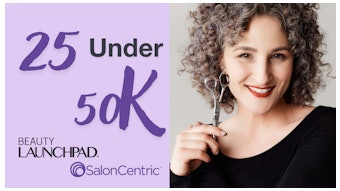
It's a hard truth: Many women experience hair loss, and oftentimes at an earlier age than one would think.
“Women who are losing hair typically are very distraught. Stereotypically, it’s somewhat normal and even accepted for men to lose some of their hair, but for women it can take an emotional toll. But as with men, there is hope for women, in a variety of ways, to grow their hair back,” says Patrick Angelos, MD, author of The Science and Art of Hair Restoration: A Patient’s Guide.
Causes of hair loss in women:
Anemia, or low iron “When you don’t have enough iron, your body can’t produce the hemoglobin in your blood,” Dr. Angelos says. “Hemoglobin carries oxygen for the growth and repair of cells in your body, including the cells that stimulate hair growth.”
After pregnancy “Estrogen levels decline, which shifts her hair cycle from the growing phase to the resting or telogen phase,” Dr. Angelos says. “Full recovery to a normal length of hair may take upward of a year.”
Autoimmune diseases “Some of them, because of their systemic nature, can cause hair loss,” Dr. Angelos says. “Autoimmune diseases also affect the gastrointestinal tract, leading to nutritional issues that can then cause hair loss.”
Menopause “This type of hair loss can affect more than 50 percent of women,” Dr. Angelos says. “Menopause-based hair loss happens because of the significant drop in estrogen that happens as a woman ages. That can put the hairs in a prolonged resting phase.”
Treatments for hair loss in women:
Minoxidil This is also known as a vasodilator; it helps increase blood flow to the scalp. “It helps some of the small hairs grow stronger and thicker,” Dr. Angelos says. “Minoxidil increases the duration of the growth phase of the hair cycle. It takes at least a couple of months to see results.”
Nutrafol “This is a commercially available product that includes vitamin E, ashwagandha–an Indian ginseng known as a stress and anxiety reducer–curcumin, a powerful antioxidant, and other anti-inflammatories that have been shown to be effective,” Dr. Angelos says.
Hair transplantation “Regardless of the cause or degree of hair loss, a stable donor area–hair along the back and sides of the scalp–is the key criterion,” Dr. Angelos says. Before women consider transplantation, he says they should try other treatments for at least a year for the doctor to rule out different causes, watch the hair progression and determine if they are a viable transplant candidate.
Low Laser Light Therapy “This can be an especially good option when a woman is not a good candidate for hair transplantation,” Dr. Angelos says. “The lasers target the hair follicles and stimulate circulation and oxygenation, causing them to shift into the growing phase.”











